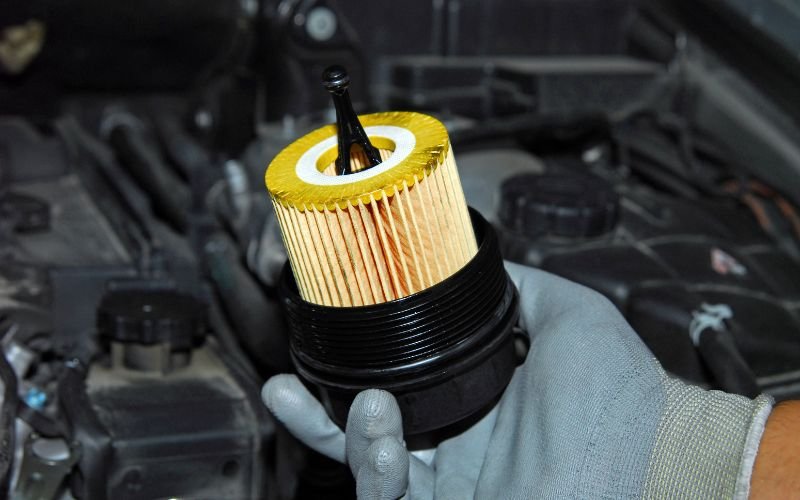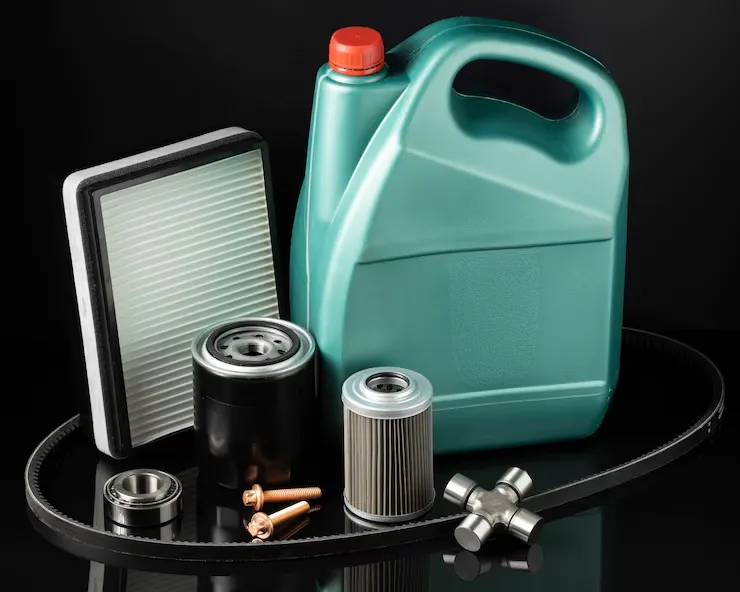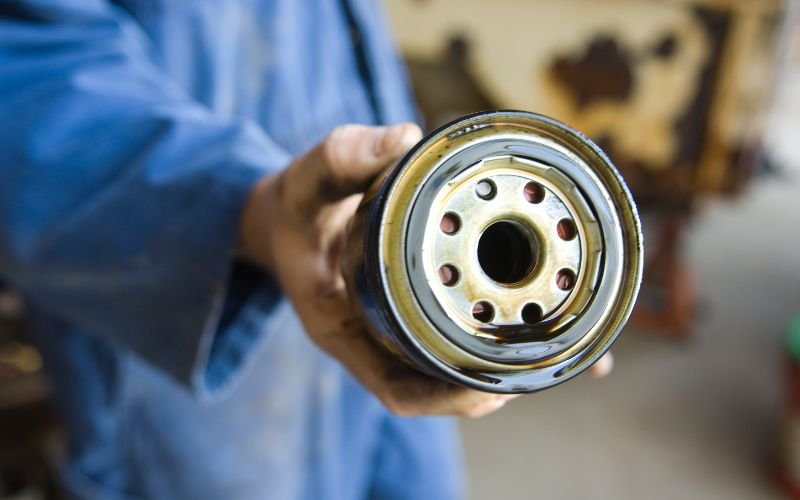Car Oil Filter
A car oil filter is a small but essential component of your vehicle’s engine lubrication system. Its primary job? To trap contaminants, metal shavings, carbon buildup, and sludge from circulating in your engine oil. Without it, all those particles could cause engine wear, reduce oil flow, and damage expensive internal components.
A clean oil filter ensures that your engine runs smoothly by delivering filtered, clean oil to all the moving parts that rely on lubrication.
Why Oil Filters Matter for Your Engine
Imagine your engine as the heart of your car. The oil is its lifeblood, and the oil filter is the kidney, removing toxins and contaminants. Over time, the oil collects dirt, and if not filtered properly, this grime will wreak havoc on your engine.
Key roles of an oil filter:
- Maintains proper oil pressure
- Removes microscopic debris and particles
- Prevents engine sludge buildup
- Supports fuel economy
- Extends engine lifespan
A quality filter also prevents contaminated oil from entering delicate engine parts, thanks to mechanisms like anti-drainback valves and bypass valves, which help regulate oil flow even under stress or cold starts.
Types of Car Oil Strain Explained
Understanding the types of oil filters available will help you make an informed purchase:
Spin-On Oil Filters
These are the most common. They are easy to remove and replace; perfect for DIY enthusiasts. They come with a built-in filter media and housing.
Cartridge Oil Filters
More common in European and newer cars, they are eco-friendlier and often require access to the filter housing separately. Slightly more involved to replace.
Magnetic Oil Filters
These use magnets to catch metal particles. Often used as an add-on to enhance filtration.
High-Mileage Oil Filters
Designed for vehicles over 75,000 miles. They include additives and special media that trap engine sludge and accommodate thicker oils.
Synthetic Oil Filters
Built to last longer, these filters pair best with synthetic oils and offer higher micron ratings, capturing finer particles for extended oil change intervals.
How to Choose the Right Oil Filter for Your Vehicle
Your car isn’t one-size-fits-all, and neither is the oil filter. Here’s what to consider:
Compatibility
Always match the filter to your make, model, and engine size. Check your owner’s manual or use an online fitment tool.
Filter Media
- Cellulose: Basic but affordable. Captures 80% of contaminants >20 microns.
- Synthetic: Higher filtration, better flow, and longer life.
- Blended: A mix of both for balanced performance.
Micron Rating
A lower micron rating means better filtration. Look for filters rated 10–20 microns for high performance.
Build Quality
Ensure it has a durable metal canister, strong gaskets, and an anti-drainback valve to prevent dry starts.
Signs Your Oil Car Filter Needs Replacing
An oil filter can’t be visually checked easily, but your car will give you hints:
- The oil pressure warning light appears
- Engine performance drops or runs roughly
- Dirty or darkened oil, even after a recent change
- Metallic noise or ticking from the engine
- Increased fuel consumption
- Visible leaks around the oil filter housing
How Often Should You Change Your Oil Filter?
Most manufacturers recommend changing the oil filter every time you change your oil. For conventional oil, that’s about every 3,000 to 5,000 miles. For synthetic oil, it may stretch to 7,500 to 10,000 miles, but always consult your vehicle manual.
Keep in mind:
- High-performance engines may require more frequent changes.
- Off-road or dusty driving conditions shorten filter lifespan.

Step-by-Step: How to Replace a Car Oil Filter
Here’s a simple guide for DIYers:
Tools Needed:
- New oil filter (match model)
- New engine oil
- Oil filter wrench
- Drain pan
- Funnel
- Gloves and rags
Steps:
- Warm up your car slightly (not hot) to thin the oil.
- Use a jack to lift the car safely.
- Place a pan beneath the oil drain plug and unscrew it.
- Let the oil drain completely.
- Locate the oil filter (usually near the oil pan).
- Use a wrench to unscrew the old filter.
- Lubricate the gasket on the new filter with fresh oil.
- Install the new filter (hand-tighten only).
- Replace the drain plug and refill the engine with oil.
- Start the engine, check for leaks, and monitor oil pressure.
Dispose of the old oil and filter responsibly at a recycling center.
Top Car Oil Filter Brands in 2025
Here are some of the most trusted oil filter brands you should consider:
| Brand | Strengths | Ideal For |
| Fram | Budget-friendly, widely available | Everyday drivers |
| Mobil 1 | High efficiency, synthetic media | Performance & synthetic oil use |
| Bosch | Durable build, precision fit | European vehicles |
| K&N | Reusable, high flow rate | Sports cars and racing setups |
| WIX | Consistent quality, OEM-level standards | Long-haul and high-mileage use |
Each has specific models for full-flow, bypass, and synthetic-compatible oil filters.
OEM vs Aftermarket Oil Filters: Which Is Better?
- OEM (Original Equipment Manufacturer):
Built to your car maker’s exact specifications. Best if you’re unsure and want to play it safe. - Aftermarket:
Offer more variety, performance upgrades, and affordability. Brands like Mobil 1 or Bosch may outperform OEM in filtration and flow.
Verdict: Aftermarket filters are perfectly safe if chosen from a reputable brand and matched to your vehicle.
Synthetic vs Regular Oil Filters
Regular oil filters may not hold up under the longer intervals that synthetic oils allow.
| Feature | Regular Filter | Synthetic Filter |
| Media Type | Cellulose/Blended | Synthetic |
| Filtration Efficiency | 80–90% | 99% or more |
| Micron Rating | ~20 microns | As low as 10 microns |
| Change Interval | 3k–5k miles | 7.5k–15k miles |
| Best Paired With | Conventional oil | Synthetic/High-mileage oil |
If you are using synthetic oil, invest in a matching synthetic oil filter for maximum efficiency.
Final Thoughts: Prioritizing Engine Health
The car oil filter may be small, but its impact is enormous. Regularly changing your oil and filter is the single most important maintenance task to protect your engine and wallet.
Whether you are a hands-on DIYer or prefer leaving it to the pros, understanding oil filter basics helps you:
- Make smarter buying decisions
- Avoid costly engine issues
- Get the most out of every oil change
Choose quality, know your vehicle, and stay on schedule. Your engine will thank you with every smooth, fuel-efficient mile.

FAQs
Can I reuse an oil filter?
No. Most oil filters are single-use and should be replaced with every oil change. Reusing one can lead to clogging and engine damage.
Will a better oil filter improve performance?
It won’t boost horsepower, but it improves engine health, reduces wear, and helps maintain fuel efficiency.
Is it bad to skip an oil filter change?
Yes. A clogged oil filter can cause oil starvation, increase pressure, or even trigger bypass valve activation, pushing unfiltered oil through the engine.
Can the wrong oil filter damage my engine?
Absolutely. An incorrect filter can leak, provide poor flow, or fail under pressure, leading to engine failure.
How do I know which oil filter fits my car?
Use your owner’s manual, an online filter selector, or cross-reference charts from trusted brands.
Citation:
AutoZone. (n.d.). Oil Filter. Retrieved July 9, 2025, from https://www.autozone.com/filters-and-pcv/oil-filter







